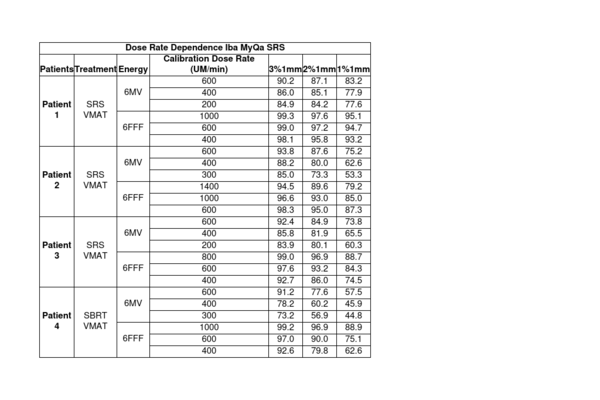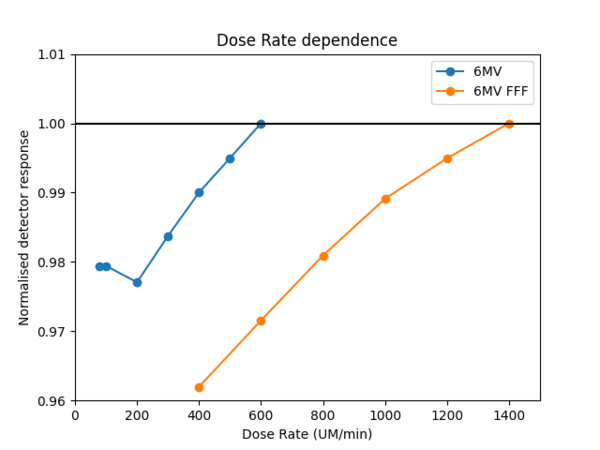Dose rate dependence study in MyQa SRS and its influence on gamma analysis.
Francisco Mosquera-Pena Sánchez,
Spain
PO-1787
Abstract
Dose rate dependence study in MyQa SRS and its influence on gamma analysis.
Authors: Francisco Mosquera-Pena Sanchez1, Ricardo Dorado Dorado1, Julio Vázquez Rodríguez1, Andrés Fernández González1, Benito Andrade Álvarez1, Antonio Teijeiro García1, Manuel Salgado Fernández1
1Hospital do Meixoeiro - Sergas, Radiophysics, Vigo, Spain
Show Affiliations
Hide Affiliations
Purpose or Objective
The Iba MyQa SRS (Iba Dosimetry) ® radiosurgery measurement equipment aims to be one of the references in the verification measurement of radiosurgery and SBRT treatments.
The purpose of this study is to see the dose rate dependence of the equipment and how it influences the gamma analysis.
Material and Methods
A new Iba MyQa SRS ® detector has been used. The detector is based on CMOS technology. This offers important advantages such as a spatial resolution of 0.4mm and a detection surface (12cm x 14cm). However, the measurement is dependent on the dose rate. This dose rate has already been studied for 10MV FFF [1] but not for 6MV FF and 6MV FFF.
Dose rate dependence calibration curves have been performed for 6MV and 6FFF energies. For this purpose, the equipment has been calibrated at the maximum dose rate, 600 and 1400 UM/min respectively for each energy and the reproducibility of the equipment has been studied by performing a series of 8 measurements for each available dose rate (80, 100, 200, 300, 400, 500 and 600) for 6MV and (400, 600, 800, 1000, 1200 and 1400) for 6FFF.
Measurements have been processed using a Phyton home-made software. This way we could average values over a region of interest (ROI) around central detector to minimize the effect of detector noise. Subsequently, the values have been normalised to the calibrated rate value to obtain a dose rate dependence curve.
A study of 4 patients with SRS and SBRT planned with VMAT has also been performed. Each one has been planned for 6MV and 6FFF energies, and the measurements of each of them have been performed by calibrating the absolute dose to 3 different dose rates, choosing 100% of the maximum rate, and then values close to 70 and 50% respectively, to see the influence of the dose rate dependence on treatment plans.
Results
The dose rate dependence for 6MV and for 6FFF is shown in the figure. Each point shows the average value of an ROI for each group of measurements for each of the different dose rates.
The plot also shows the error bars, which are a propagation of uncertainties associated with the standard deviation of the ROI and the reproducibility of the measurements.
Global gamma analysis has been performed using the measurement as a reference. The DTA of the gamma has been set at 1mm and the difference in doses of 3%, 2% and 1%. The table shows the variation of these values with the calibration dose rate.


Conclusion
We have seen that there is a dose rate dependence that we have characterised for 6MV and 6FFF. This dependence is non-linear and affects more at lower dose rates.
It has been shown that this rate dependence can significantly affect the gamma analysis of patient QA measurements, so calibration to the optimal dose rate for each patient is essential to yield the best possible results.